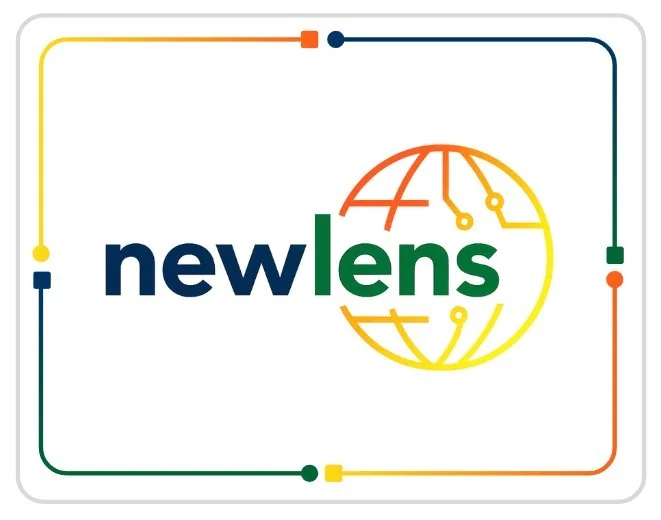Why Generative AI is an Accessibility Tool for Neurodivergent Minds - by Mat Keys
As someone with dyslexia, I know what it feels like to be separated from the so-called “normal” path. In education, I was often pulled out of mainstream lessons, given different work, and treated as if my challenges with writing meant I was somehow less capable. Traditional teaching methods - heavy textbooks, note-taking, endless handwriting - did not work for me.
But I discovered something that did: technology.
Early Struggles and a Different Path
Throughout my life, one of my biggest challenges was not reading, but handwriting and spelling. At secondary school, I could not spell my own name or write in a straight line. My writing was often unreadable.
Instead of receiving support, I was misunderstood. At primary school, teachers quickly labelled me as “naughty” or “disruptive.” I still vividly remember being physically punished - struck with a shoe on the back of my leg three times at the front of the class - in an attempt to make an example out of me for being “lazy.” The truth was simpler: I was struggling to learn spellings and I simply could not do it.
There were also countless trips to the headmaster’s office because teachers at the time considered me a failure for mixing up my “b”s and “d”s, or for failing to write in a legible fashion.
Those experiences left a lasting mark. They made me feel isolated and ashamed, when in reality my brain was just processing things differently. What I needed was understanding and tools, not punishment.
Technology became a blessing. From an LCD spelling device to the family PC my parents bought, I found ways forward. Typing was easier than handwriting. Computer programs gave me the ability to check, edit, and restructure my work in ways pen and paper never could.
I soon learned to touch-type, finally free from the constraints of pen and paper.
Where traditional methods failed, I created my own path of self-learning. Instead of following the expected track, I built skills through curiosity, persistence, and technology.
Those early adaptations shaped my career. After dropping out of A-levels, I began working as a receptionist. It was not long before my skills and affinity with IT saw me move into IT support, data, analytics, and technology roles. In those environments, my strengths - problem-solving, logical thinking, and structure - could shine without being hidden behind spelling or handwriting barriers.
Technology as a Lifeline
Word processors, databases, spreadsheets, and later systems like SQL and Salesforce gave me the ability to express my strengths clearly. These tools were not just convenient, they were essential for me to work on an equal footing with colleagues.
Technology gave me structure, order, and confidence. It turned what could have been a barrier into a bridge.
Generative AI: The Next Leap
Now, with the arrival of generative AI, I feel the same sense of transformation all over again. For me, large language models (LLMs) such as ChatGPT are not “nice-to-have productivity tools.” They are accessibility tools.
Here is why:
Drafting support: I can put down rough thoughts quickly and use AI to structure them into clear writing without losing my voice. I can iterate repeatedly until the tone and delivery are exactly how I want them.
Summarisation: Long policies, reports, or technical documents can be condensed into the key points I need.
Rephrasing: If something I write feels clumsy, AI suggests alternative ways to express it.
Confidence: Instead of second-guessing every sentence, I can focus on the substance of what I want to communicate.
Generative AI allows me to move at the speed of my ideas, not the speed of my spelling.
Why This Matters for Others
For neurodivergent people, AI is more than automation. It is empowerment.
Dyslexic, autistic, and ADHD minds often bring unique strengths such as creativity, systems thinking, hyperfocus, and pattern recognition. Yet these strengths can be hidden by communication barriers in environments designed for neurotypical norms. AI helps remove those barriers.
When used thoughtfully, generative AI:
Levels the playing field in education and workplaces.
Reduces the friction of traditional communication barriers.
Allows people to show their ideas and insights without being held back by form.
A Call to See AI Differently
Much of today’s conversation about AI focuses on efficiency, cost savings, or the risks of automation. Those are valid debates. But we also need to recognise AI as accessibility technology.
For people like me, it is not just about working faster. It is about working fairly. AI helps ensure that neurodivergent minds are judged by the value of their ideas, not the neatness of their handwriting or the quirks of their spelling.
Closing Thought
Dyslexia shaped me, but it did not define me. It pushed me towards technology, towards problem-solving, and towards independence. Generative AI is simply the next chapter in that journey - a tool that does not just make me more efficient, but makes me more myself.
If we truly believe in inclusion, then we must see AI for what it is: not just a future technology, but a present-day accessibility tool that can help neurodivergent minds thrive.
Note: This post reflects my own experience of how AI supports me as someone with dyslexia. I recognise that neurodivergent people have very different needs, and AI won’t be the right tool for everyone. Generative AI also carries risks — from bias to inaccuracy — and should never be seen as a perfect solution. My aim here is to share how, with the right context and prompting, it can act as an accessibility tool for some of us, and hopefully spark a broader conversation about inclusion.
